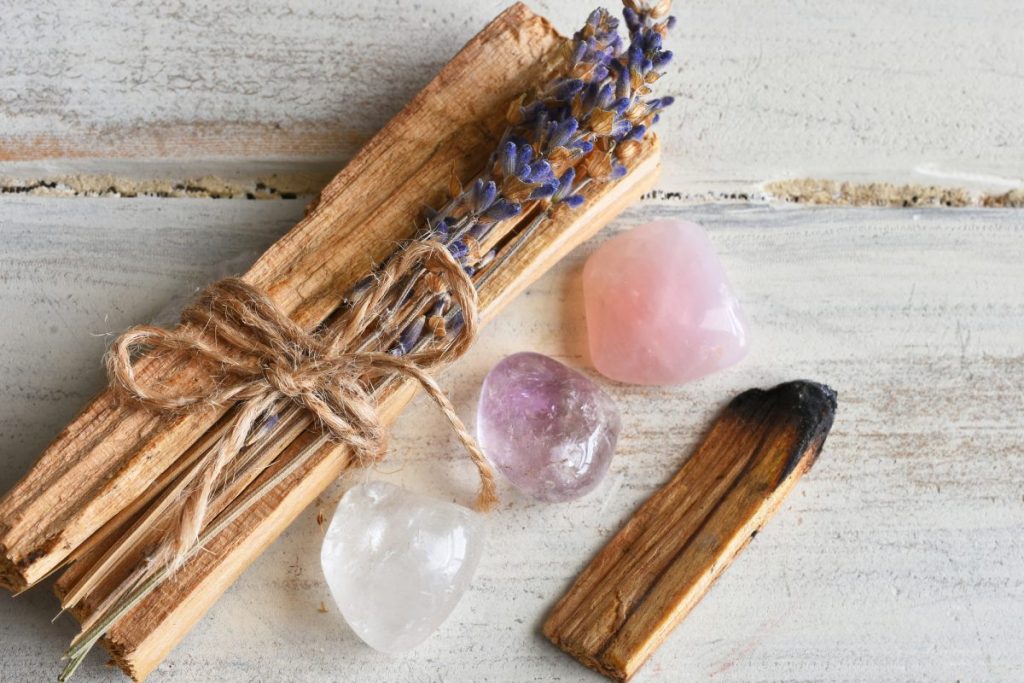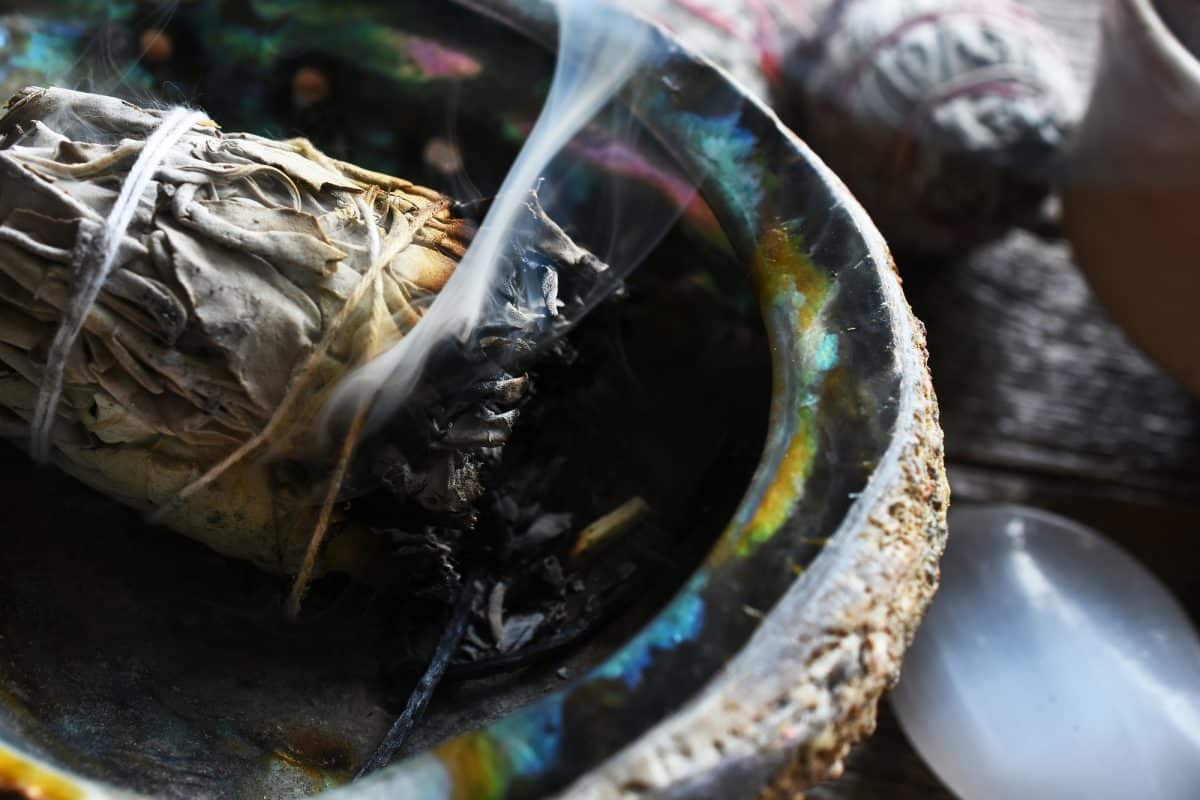Making Your Own Herbal Incense
Dive into the world of mesmerizing scents and therapeutic experiences with this comprehensive guide to crafting your own herbal incense.
Table of Contents
Unraveling the Mysteries of Herbal Incense: A Timeless Tradition

Herbal incense, a mixture of herbs, resins, and essential oils, has been a cornerstone of diverse cultures for thousands of years.
From ancient Egyptian rituals to the practices of modern-day aromatherapists, the allure of herbal incense lies in its incredible ability to cleanse spaces, offer stress relief, improve sleep quality, and augment concentration.
Melding Art and Science: The Fascinating Process of Herbal Incense Creation
The crafting of herbal incense is a brilliant amalgamation of art and science. It involves the careful selection and blending of various ingredients, each with its unique properties and aroma, to create a concoction that truly resonates with your senses and preferences.
Essential Tools and Ingredients: Your First Steps into Incense Craftsmanship
Diving into the realm of incense creation requires some basic tools and ingredients. Here’s a detailed overview:
- Herbs: These form the base of your incense blend. Each herb carries its unique fragrance and properties. Lavender, for instance, is known for its calming properties, while sage is used for cleansing spaces. Choosing organic, dried herbs ensures a purer and safer incense.
- Resins: Resins like frankincense, myrrh, and copal are tree saps that have solidified. They contribute to the rich, traditional scent of incense and facilitate a steady, smoldering burn.
- Essential Oils: These potent extracts serve as an additional layer of fragrance to your incense. Be it floral, citrusy, or earthy notes, there’s an essential oil for every preference.
- Makko Powder: This is a natural binder derived from the bark of the Tabu-no-ki tree. Makko not only helps your ingredients stick together but also ensures a slow, even burn.
- Grinder: A basic mortar and pestle work perfectly for crushing your herbs and resins into a powder.
- Charcoal Disks: These are essential for burning your finished incense. Make sure to choose quick-lighting, smokeless varieties for the best experience.
Mastering the Blend: Crafting Your Signature Herbal Incense Recipe
Creating your unique incense blend is akin to crafting an aromatic symphony. Here’s how to orchestrate your ingredients:
- Base Note: Choose a base herb or resin that resonates with you. This will form the foundation of your blend.
- Middle Note: Add in complementary herbs to enhance the base note. This creates a layered, nuanced fragrance profile.
- Top Note: Introduce a few drops of essential oils to crown your blend. This adds an extra dimension to your incense.
Remember, the art of blending is subjective, and it’s essential to experiment and discover combinations that you find appealing. Also, always document your recipes and ingredient ratios to replicate or tweak them in the future.
The Journey from Ingredients to Incense: A Step-By-Step Guide
Creating herbal incense is a transformative process. Here’s a detailed walk-through:
- Grinding: Start by grinding your dried herbs using your mortar and pestle until you achieve a powder-like consistency.
- Incorporating Resins: Next, grind your chosen resins and add them to the powdered herbs.
- Adding Makko and Oils: Now, mix in your makko powder and essential oils. Ensure thorough mixing to achieve a homogenous blend.
- Shaping: You can either leave the mixture loose or shape it into cones or sticks using a bit of water.
- Resting: Let your incense dry and allow the aromas to meld together. This could take anywhere from a few days to a week.
- Enjoyment: Finally, light your incense on a charcoal disk, sit back, and let the delightful fragrance envelop your space.
A Symphony of Scents: Matching Incense with Your Lifestyle
The beauty of making your own incense is that you can tailor it to fit your lifestyle and needs. Looking for an incense to aid relaxation? Opt for a lavender-based blend. Need to enhance focus during work or study sessions? Try incorporating rosemary. Explore and experiment with various combinations until you find your perfect match.
The Perks of Homegrown Incense: Embracing DIY Aromatherapy
Crafting your own incense not only allows you to control the ingredients, ensuring a healthier, artificial fragrance-free environment, but it also provides an enriching, therapeutic activity. Engaging with the textures, fragrances, and processes involved in incense making can be a form of mindfulness practice, enhancing relaxation and grounding.
Chapter 9: Understanding Aromatic Herbs: The Backbone of Incense
When we think of incense, we often imagine the mesmerizing smoke and the rich scent that it carries. The source of these fragrances, more often than not, are the herbs used in making the incense.
Herbs are the backbone of any incense blend. In fact, the variety and type of herbs you select can significantly affect the aroma, smoke, and even the color of your incense. As a result, understanding the different herbs, their unique properties, and their aromatic profiles becomes crucial.
Lavender, for instance, is known for its calming and soothing aroma. Sage, on the other hand, has a sharp, clean scent, often used in smudging or cleansing rituals. Rosemary, with its pine-like fragrance, is a favorite for boosting memory and concentration.
However, the world of aromatic herbs goes far beyond these popular ones. Lemon balm, chamomile, patchouli, peppermint – the list is endless. Exploring these herbs, their cultural uses, and their scent profiles can be a rewarding journey of its own, adding depth to your incense making practice.
Resins: Adding Depth and Complexity to Your Incense
Often overlooked by beginners, resins are an integral part of many traditional incense blends. These are essentially aromatic gum from trees, which solidify upon exposure to air.
Frankincense, derived from the Boswellia tree, is one of the most well-known resins with a sweet, woody aroma and a history of use in religious ceremonies. Myrrh, another famous resin, has a slightly bitter, earthy scent and is often paired with frankincense.
Resins add depth and complexity to your incense blend, making them last longer and smolder rather than burn rapidly. They also act as natural binders, helping your incense blend hold its shape when forming cones or sticks.
Essential Oils: The Concentrated Essence of Nature
Essential oils are the concentrated essence of various plants, carrying their fragrance and therapeutic properties. When used in incense making, they provide an extra layer of aroma, amplifying the existing scents, and adding a touch of luxury to your blend.
From the romantic aroma of rose and jasmine to the invigorating scents of citrus oils like orange or lemon, to the grounding, earthy notes of vetiver and cedarwood, there’s an essential oil for every mood and preference.
Makko Powder: The Unsung Hero of Incense Making
Makko powder, a product of the Tabu-no-ki tree, is a crucial ingredient in incense making, yet it remains largely unknown to many beginners. Its primary function is to serve as a combustible base – it helps the incense burn steadily without the need for constant relighting.
Besides its functional role, makko also contributes subtly to the aroma of your incense. It has a mild, sweet-woody scent, which can enhance the overall fragrance profile of your blend without overpowering the other ingredients.
Crafting Incense Cones and Sticks: A Step Beyond Loose Incense
While loose incense is wonderful for beginners, crafting incense cones or sticks can be an exciting next step in your incense making journey. Not only do they look appealing, but they also burn longer and are easier to handle.
The process involves adding a binding agent, such as tragacanth gum or makko powder, to your incense blend, along with a bit of water to form a moldable dough. This dough can then be shaped into cones or rolled onto bamboo sticks and left to dry.
Embracing Mindfulness: The Therapeutic Aspect of Incense Making
Beyond the product itself, the process of making incense can be deeply therapeutic. The act of selecting herbs, grinding them, mixing the ingredients, and even shaping them into cones or sticks can be a mindful practice that allows you to engage with your senses and stay present in the moment.
Whether it’s the tactile sensation of grinding the herbs, the visual appeal of the ingredients coming together, or the invigorating aromas that fill your space, incense making offers numerous avenues for mindful engagement.
Storing and Caring for Your Incense: Preserving the Magic
Once you’ve put in the effort to create your own herbal incense, it’s crucial to store them properly to maintain their fragrance and potency. Store your incense in airtight containers, in a cool, dark place. This preserves the fragrance and prevents any moisture damage. Always remember to keep your incense out of reach of children and pets.
Enjoy the journey, experiment with different combinations, and let the enchanting world of herbal incense infuse your life with its magic. Happy incense making!






